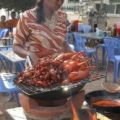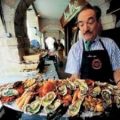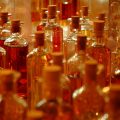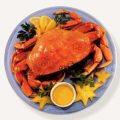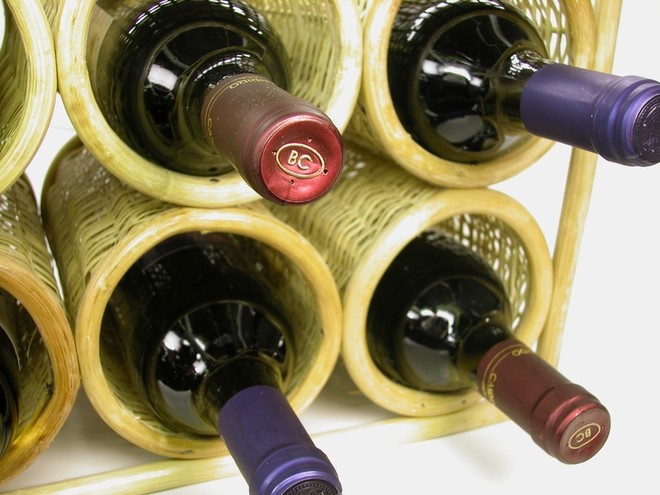 Classification of wines Today, underthe world's vineyards occupy about 10 million hectares. The undisputed leaders in the world wine market are Spain, Italy, France and Portugal. They are followed by Romania, Germany, Hungary, Greece, Bulgaria, USA, Chile, New Zealand and South Africa. The CIS countries take the fourth place in the world in terms of the total volume of wine production. The common European classification of wines is based on the one that was adopted in France. According to it, absolutely all grape wines are divided by type into two groups: still (natural, liqueur, flavored) and sparkling. Natural wine is the simplest type that is produced naturally. Grape juice ferments with yeast, which converts sugar into alcohol. The strength of still wines is from 8 to 15 degrees.
Classification of wines Today, underthe world's vineyards occupy about 10 million hectares. The undisputed leaders in the world wine market are Spain, Italy, France and Portugal. They are followed by Romania, Germany, Hungary, Greece, Bulgaria, USA, Chile, New Zealand and South Africa. The CIS countries take the fourth place in the world in terms of the total volume of wine production. The common European classification of wines is based on the one that was adopted in France. According to it, absolutely all grape wines are divided by type into two groups: still (natural, liqueur, flavored) and sparkling. Natural wine is the simplest type that is produced naturally. Grape juice ferments with yeast, which converts sugar into alcohol. The strength of still wines is from 8 to 15 degrees. 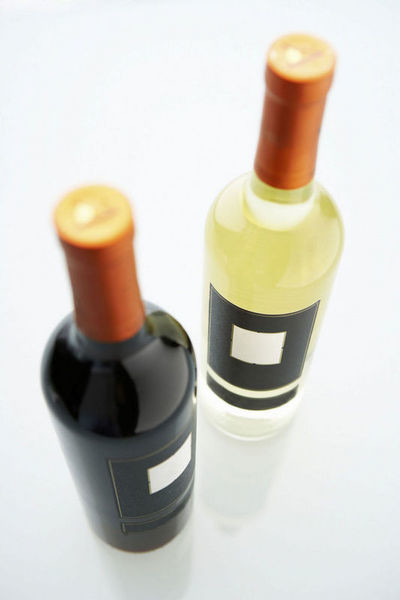 On the basis of natural wines they prepare liqueur andflavored. The fortress of liqueur wines reaches 15-20 degrees. To get a product with such a high alcohol content, a strong alcoholic drink, such as brandy, is added to a quiet, natural wine. Flavored wines are obtained on the basis of quiet with the help of herbs, spices and spices. In our country, they are also referred to as "original." The most popular flavored wines are, as you know, vermouths. The only difference between sparkling wines and still wines is the content of dissolved carbon dioxide. In sparkling beverages, it is not removed, but safely accumulates in the bottle. And the best sparkling wine is undoubtedly champagne from the French province of Champagne. Two other characteristics of wine are the color and degree of sweetness. Here, too, have their own classifications. Wine is white, pink, red. According to the degree of sweetness - dry, semi-dry, semi-sweet and sweet.
On the basis of natural wines they prepare liqueur andflavored. The fortress of liqueur wines reaches 15-20 degrees. To get a product with such a high alcohol content, a strong alcoholic drink, such as brandy, is added to a quiet, natural wine. Flavored wines are obtained on the basis of quiet with the help of herbs, spices and spices. In our country, they are also referred to as "original." The most popular flavored wines are, as you know, vermouths. The only difference between sparkling wines and still wines is the content of dissolved carbon dioxide. In sparkling beverages, it is not removed, but safely accumulates in the bottle. And the best sparkling wine is undoubtedly champagne from the French province of Champagne. Two other characteristics of wine are the color and degree of sweetness. Here, too, have their own classifications. Wine is white, pink, red. According to the degree of sweetness - dry, semi-dry, semi-sweet and sweet. 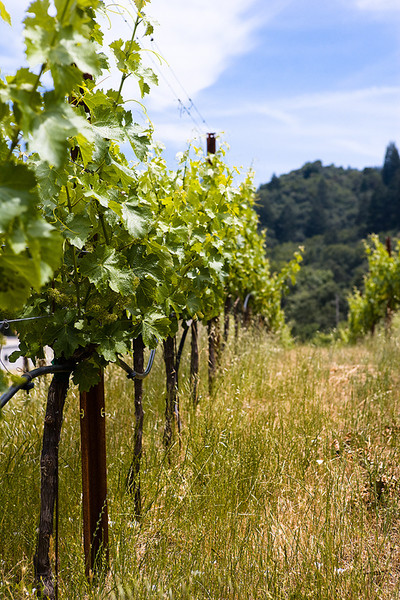 It is curious that white wine can be made fromany grape variety, be it white, red or black. What matters here is the processing method. To get white wine, squeezed grape juice is drained and fermentation takes place without skin. Red wines are usually made from red grapes, and squeezed juice ferments along with the skin. And, finally, the mystery is rosé wines. Although it is all very simple. Rosé wines are made from red grapes, but the method of preparation remains the same as that of the “white fellows”. The nuance is that the wort ferments along with the skin for several hours, and then it is removed. In such a short period of time, the dyes do not have time to completely go into the wort, the result is the desired pink color. As for the degree of sweetness, most natural wines are dry (the sugar they contain turns into alcohol). In semi-dry and semi-sweet wines, sugar remains due to the characteristics of one or another grape variety.
It is curious that white wine can be made fromany grape variety, be it white, red or black. What matters here is the processing method. To get white wine, squeezed grape juice is drained and fermentation takes place without skin. Red wines are usually made from red grapes, and squeezed juice ferments along with the skin. And, finally, the mystery is rosé wines. Although it is all very simple. Rosé wines are made from red grapes, but the method of preparation remains the same as that of the “white fellows”. The nuance is that the wort ferments along with the skin for several hours, and then it is removed. In such a short period of time, the dyes do not have time to completely go into the wort, the result is the desired pink color. As for the degree of sweetness, most natural wines are dry (the sugar they contain turns into alcohol). In semi-dry and semi-sweet wines, sugar remains due to the characteristics of one or another grape variety. 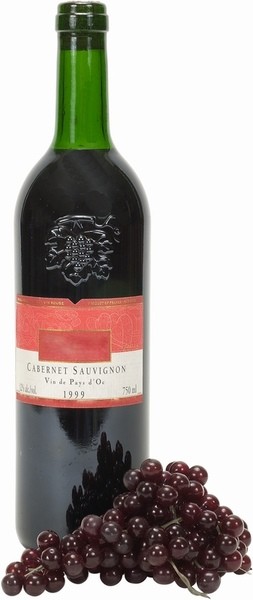 Which wine to prefer, red, white orpink is a matter of taste. The main thing is that it actually turned out to be of high quality and tasty. By the way, scientists from the Stanford University School of Business, together with colleagues from the California Institute of Technology, conducted a study, according to which it turned out that people prefer expensive wine, regardless of its actual quality. The experts suggested a group of volunteers to tast several samples of cabernet sauvignon and choose the wine that they like more than others. All participants in the experiment knew the price of each bottle, which, however, did not correspond to the actual cost. For example, researchers gave a bottle of wine for $ 90 for cabernet for only $ 19, and wine worth $ 5 was called 9 times more expensive. As a result, the majority of participants in the experiment called the most delicious wine the most expensive. The experience illustrated illustrates how psychological expectations can influence the level of pleasure obtained. In addition, special devices showed that supposedly more expensive wine caused a stronger activity of the brain center, which is responsible for pleasure. At the same time, the activity of the brain region associated with the sensation of taste remained approximately at the same level. Sweet to you, friends, emotions, pleasant impressions and sparkling mood!
Which wine to prefer, red, white orpink is a matter of taste. The main thing is that it actually turned out to be of high quality and tasty. By the way, scientists from the Stanford University School of Business, together with colleagues from the California Institute of Technology, conducted a study, according to which it turned out that people prefer expensive wine, regardless of its actual quality. The experts suggested a group of volunteers to tast several samples of cabernet sauvignon and choose the wine that they like more than others. All participants in the experiment knew the price of each bottle, which, however, did not correspond to the actual cost. For example, researchers gave a bottle of wine for $ 90 for cabernet for only $ 19, and wine worth $ 5 was called 9 times more expensive. As a result, the majority of participants in the experiment called the most delicious wine the most expensive. The experience illustrated illustrates how psychological expectations can influence the level of pleasure obtained. In addition, special devices showed that supposedly more expensive wine caused a stronger activity of the brain center, which is responsible for pleasure. At the same time, the activity of the brain region associated with the sensation of taste remained approximately at the same level. Sweet to you, friends, emotions, pleasant impressions and sparkling mood!

Making Money with Desserts: Success Stories
Yevhen Polishchuk (Fedutinov) instagram: @ evgeniyafedutinovavk.com / janeshomebaking– It all started with baking for relatives and friends. Gradually, she began uploading photos of her baking to Instagram, and orders began to come in. I made my first cake to order on October 13, 2014, and a little earlier I started making macarons and cupcakes. We can say that the business "found me myself", I am very [...]

Soups are cold recipes with photos
Cold cucumber soup with yogurt and lemonSorbet from La Taverna restaurant chef Alexander Zhurkina Photo: Getty Images Ingredients: Yoghurt without additives - 125 gCucumber - 150 gSorbet lemon / lime - 50 gCool shrimp - 24 gFresh ginger - 1 gLime lime - 5 gFresh orange juice - 5 gPetroshka - 1 g pink - 1 gCress salad - […]

barbeque kebab
Pork tenderloin glaze Photos: Dmitry Bayrak / dbstudio Cooking time: 20 minutes + time for pickling. Calorie content: 454 kcal per 1 serving. For 4 servings: 4 pork tenderloin (about 300 g each), 1 onion, 2 cloves of garlic, 1 tsp. lemon peel, 1 tsp. lemon juice, a pinch of ground cumin, coriander and turmeric, 1 tbsp. l vegetable [...]

Pierre Duacan: dietary recipes: Ducane diet
Beetroot Photo: Season'S, Luxury Hotels Representation You will need: · Boiled beets - 60 g · Fresh cucumbers - 20 g · Red radish - 20 g · Green onions - 10 g · Egg - 1 pcs · Mineral drinking water - 200 g · Salt - 1 g Ready: · Boil egg and beetroot. · Grind cucumbers, radishes and a part of beets. Putting everything [...]

